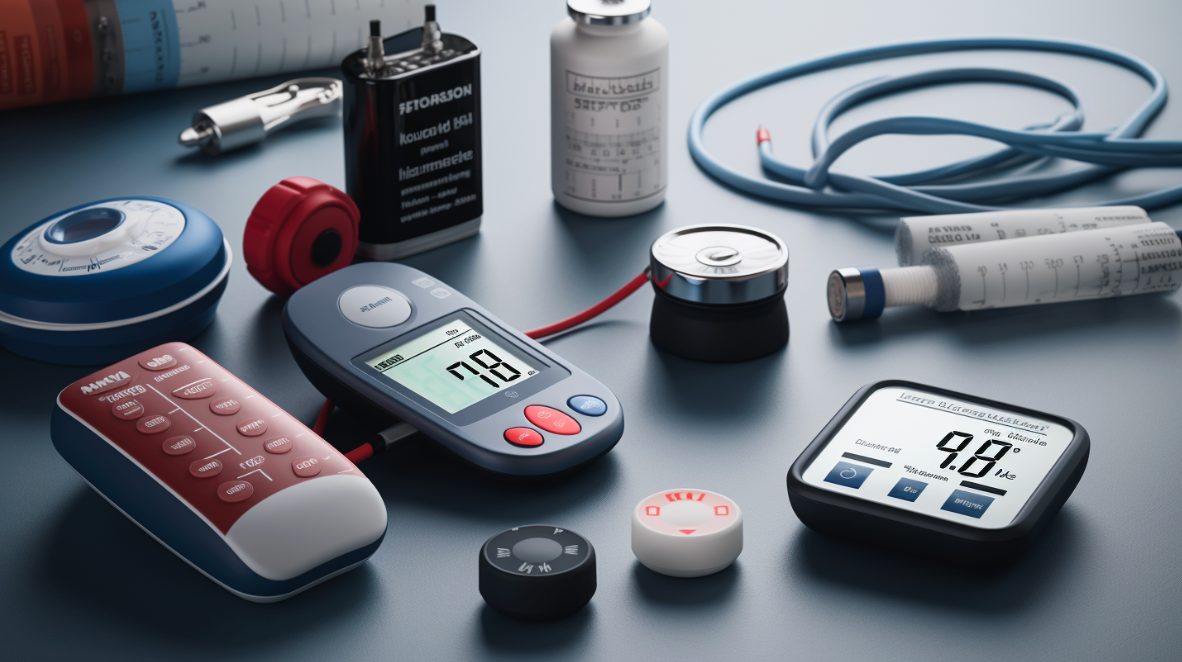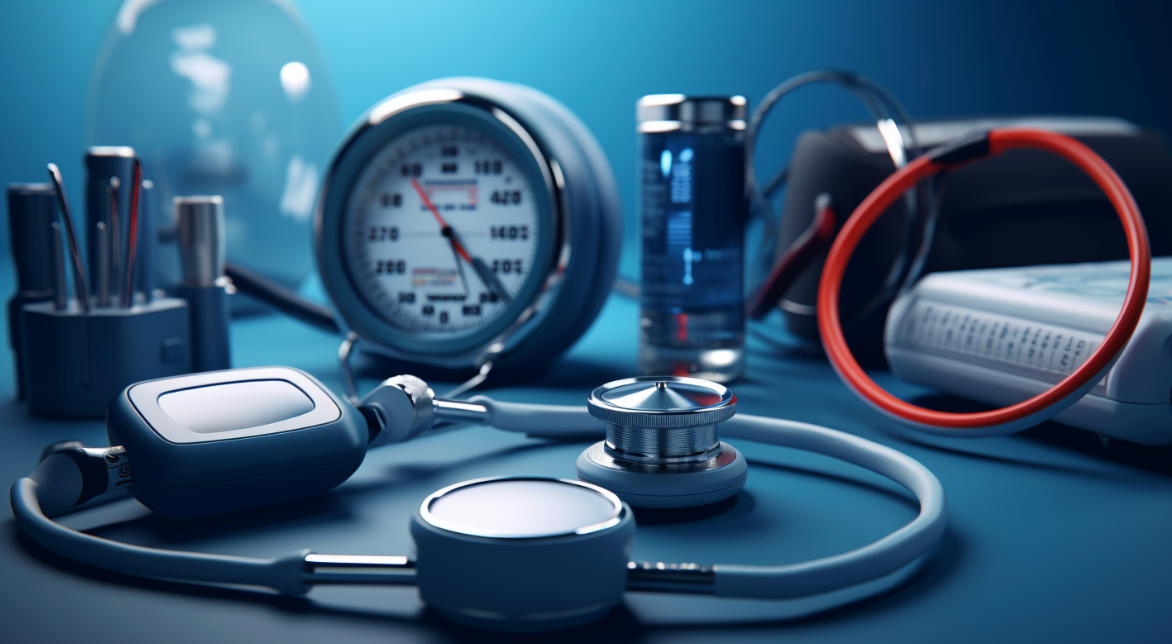Clinical trials are not just designed to test new drugs and medication, they also assess the efficacy of experimental medical devices before they can be placed on the market. Each clinical trial involves human participants, rigorously evaluating new medical devices to determine their safety and how effective they are at tackling certain conditions in real-life scenarios.
In this article, we will explain the phases of clinical trials for medical devices, including how medical devices are classified, the regulatory pathways, how these trials compare with the study of drugs and more.

Looking to participate in a clinical trial?
Our clinical trial platform can connect you with trials that match your needs and eligibility. Take the first step towards accessing cutting-edge treatments and start your search today to discover the potential benefits of participating in clinical trials.
Which medical devices require clinical trials
In the United States, all Class III medical devices need to undergo clinical trials before receiving premarket approval (PMA) from the FDA due to their invasive nature. Other classes of medical devices do not need to undergo clinical trials governed by the FDA, but might also include them to ensure their safety and efficacy.
How medical devices are classified
- Class I: This class contains non-invasive medical devices that present minimal risk. Should one of these devices malfunction then the risk posed to the patient is extremely low.
- Class II: Devices that are categorized in Class II present low-to-medium risk to the user, typically applied to the body for periods between at least one hour and no more than 30 days.
- Class II-b: This class presents medium-to-high risk to users and refers to medical devices that are applied to the body for more than 30 days.
- Class III: This is the highest class of medical devices and presents the highest risk to patients. Should a Class III medical device malfunction then the risks could be significant. Examples of Class III medical devices include pacemakers or prosthetic heart valves, which assist with vital organ functions. This is why Class III devices are heavily regulated and must receive FDA premarket approval following a robust clinical study.
How medical device clinical trials are initiated
Before a clinical trial can be conducted on human participants a medical device must go through a series of preclinical testing and research before applying to be involved in a clinical study.
Preclinical testing is carried out to ensure the medical device is safe and effective enough for human use. The various stages of this procedure typically include bench testing, technical testing, computer simulations, and animal studies.
Once the manufacturer of the device is satisfied with its effectiveness and safety, they can then seek approval for their product to be investigated by means of a clinical trial.
Clinical trial regulatory pathways
In the US, should a medical device manufacturer wish for their product to be involved in a clinical trial, they must first obtain an Investigational Device Exemption (IDE). Once an IDE has been granted, the device is eligible to be tested on human participants so it can be considered for market approval.
Typically, clinical trials are carried out by a medical institution such as a hospital but not always, with some private medical organizations also running their own studies that adhere to strict regulations. Hospitals and other medical institutions will be monitored by an Institutional Review Board (IRB), providing a high level of scrutiny to ensure the study meets the required standards.
The different phases of medical device clinical trials
During the life cycle of a medical device, clinical trials may be carried out during both the premarket and postmarket phases to continually assess its safety and effectiveness. This life cycle can typically be broken down into seven key phases, we’ll consider each of these phases in terms of their objective and the actions taken.
Preclinical phase
The purpose of the preclinical phase is to determine how safe and functional a new medical device is, using a mixture of laboratory and animal testing.
In this phase, laboratory testing will be conducted to evaluate the device’s design, quality of materials used, and safety level. This will be followed by animal testing which will assess biological responses and provide further insights into the safety of the device. Animal testing also allows researchers to evaluate the initial effectiveness of the device, as well as highlight any potential risks or side effects.
Investigational device exemption (IDE) phase
The objective of this phase is to gather initial safety and feasibility data from human participants to support an application to conduct a clinical trial.
First, an IDE application must be submitted to a regulatory authority such as the FDA - this application needs to outline the proposed clinical trial plan. Once approved, a small-scale pilot study or feasibility trial can be conducted with a limited number of human participants, evaluating the safety, efficacy, and viability of the device.
Clinical phase I: pilot stage
The pilot stage evaluates the safety, tolerability, and initial effectiveness of a new medical device, with healthy volunteers being tested.
A small number of healthy participants are selected to test the safety and initial efficacy of the device, while also determining the correct time frame in regard to how long the device should be worn. The focus of the pilot stage is to monitor the short-term effects of the device, including any side effects.
Clinical phase II: traditional feasibility stage
This phase expands on the initial evaluation, extending the study to a larger group of participants to further assess the device’s efficacy and possible drawbacks.
With a larger selection of participants, the device’s effectiveness, optimal use, and potential side effects can be better determined. The feasibility stage can test the medical device’s performance more accurately while comparing it to existing options or a placebo.
Clinical phase III: pivotal stage
The number of participants is increased further, spread across multiple locations to better assess its safety and effectiveness, as well as judge the device’s variability across a more diverse patient population.
A significant number of participants are enrolled in the pivotal stage and across various sites to collect comprehensive data and statistics that can provide enough accuracy for the medical device to be granted approval. Safety levels and potential adverse effects are recorded, comparing them to devices currently on the market or a placebo.
FDA review and approval
In the FDA review and approval phase, the comprehensive data is recorded and compiled into a report that is then submitted to the FDA or relevant regulatory authority for review.
Data is compiled and submitted to the regulatory body in the form of a comprehensive application that includes statistics from the preclinical trial and subsequent phases. The regulatory authority will then review this data to determine whether approval should be granted to put the medical device on the market.
Clinical phase IV: post-market surveillance stage
The post-market surveillance phase ensures the device’s performance and safety are monitored in a real-world clinical setting following market approval.
Data is continuously collected relating to the performance of the new medical device, evaluating how effective it is at treating a condition and recording any adverse effects. This is achieved through post-market surveillance studies, reporting systems, and other data collection methods.
Should monitoring activities highlight any adverse effects that are deemed excessive then actions will be taken to recall the device so it can be modified. This phase is important to thoroughly evaluate the safety of new medical devices so they can be made available to the wider population.
How these trials compare with clinical trials for drugs
Compared to clinical trial phases for drugs, medical device studies tend to involve a smaller number of participants, relying on the abilities of medical professionals, as opposed to a reliance on pharmaceuticals.
During the trial, the medical device may even be modified based on data and unexpected findings, therefore, the results of the trial can be much more diverse than a clinical trial for drugs.
Who runs clinical trials for medical devices?
Just like a clinical trial for drugs, the on-site evaluation will be conducted by an investigating physician, one or more clinical research coordinators or nurses, pathology staff, and relevant third-party vendors. Medical device studies also require fully-trained technicians, programmers, and medical imaging staff should any modifications be needed.
In some cases, psychologists or physiotherapists may also be called upon during the trial, however, this depends on the device being studied.
How to find a clinical trial for medical devices
If you are interested in enrolling in a clinical trial for a medical device then thorough research is important to identify a study that is relevant to your needs and intentions. Below are a number of options to consider when searching for a clinical trial that meets your requirements.
- Visit a reputable clinical trial registry such as ClincalTrials.gov which is maintained by the US National Library of Medicine.
- Meet with your doctor, healthcare provider, or specialist to discuss what clinical trials may be ongoing that study a medical device that is linked to your condition.
- Contact research institutions, teaching hospitals, and healthcare centers in your local area to discuss any ongoing or future clinical trials.
- Browse the websites of medical device companies, especially those that specialize in developing or manufacturing devices that are related to a condition or issue you have.
- Websites for patient advocacy groups may also share information relating to clinical trials that could be of interest. Online health forums and communities may also provide information about such trials.
- Another great source for finding clinical trials is educational facilities such as universities, academic medical centers, and teaching hospitals. These institutions often conduct trials themselves or collaborate with researchers.
- Scientific journals, medical publications, and conference notes may also contain information regarding clinical trials related to your condition.
- Online directories that list clinical trials are another way of finding ongoing or future clinical studies for medical devices. At Allclinicaltrials.com you can find a number of clinical trials for medical devices quickly, easily and with confidence.
Interested in exploring other clinical trials? Discover trials for other conditions and find new potential treatments that could support your health journey and offer innovative solutions.
View clinical trials by conditionWhen researching clinical trials for a medical device it is important to review all details of the trial, check the eligibility criteria, and the location of the trial, and take note of the contact details of the trial coordinators before choosing to participate. It is also recommended to discuss the possibility of participating in a trial with your medical provider to check that it will fully align with your treatment goals.
Summary
Clinical trials are essential when testing new medical devices, helping to determine the safety of the technology and how effective it is as a medical intervention. In certain phases these clinical trials involve human participants, allowing researchers to collect valuable, real-world data.
Before agreeing to take part in a clinical trial, participants should always be aware of the potential risks, as well as the details of the trial including the various phases, location, and duration.
